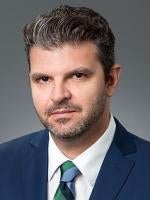Addressing the Social Determinants of Health: Is the healthcare industry pushing a rock up a hill? We collectively are trying to provide healthcare with improved quality and reduced cost, but the structure of the nation’s healthcare system remains heavily siloed with the social determinants of health often falling wholly or partly outside the mandate and reach of the healthcare delivery system. Bernard Tyson of Kaiser on Monday noted studies that health is determined approximately 30% by family history and genetics, with the majority of the healthcare impact coming approximately 40% from personal behavior, 20% from environmental factors and 10% from healthcare services. So, the playing field, if the above numbers are correct, is tilted much more toward nurture, rather than nature. While we are aware of some hospitals starting to provide housing or other limited services to address the needs of their community and therefore also to address healthcare cost containment, those examples are the exception to date, rather than the rule.
David Feinberg of Geisinger shared with the conference attendees several interesting initiatives that provide a more holistic approach. First, as to genetics, Geisinger is starting to do full DNA sequencing on some of its patients, with about 150,000 patients (out of a one million target) completed. Geisinger is finding about 3-4% of the sequenced patients with medically actionable results that can be addressed and benefit the patient. Their protocol after the sequencing results are available is to send the results to the patient’s primary care physician (PCP) along with an asynchronous medical education opportunity for the PCP to refresh on the relevant condition. Five days after the PCP is alerted, the patient is notified that there was a positive result and invited to meet with the PCP and a genetic counselor to begin to plan management and treatment as needed. Interestingly, Geisinger is finding that for each positive result found, they are receiving approximately six new patients – people who have heard about the results of the genetic testing and want to be included in this approach. A 3-4% actionable percentage can be significant in controlling healthcare costs, but is this realistic in a different market? Geisinger has both a health plan and healthcare delivery system, plus they are not subject to quite the same level of competition as we can find in other urban markets. But, in evaluating this, keep in mind the July 2016 Department of Health and Human Services finding that approximately 5% of the U.S. population accounts for almost 50% of healthcare spending. So, in that light, is an investment in genome sequencing an investment in the “public commons” of healthcare that will benefit everyone?
As to the “nurture” side of the health equation, Geisinger has launched Springboard Health to address the social determinants of health. With an initial effort in the Scranton, Pennsylvania area, selected participants are provided with food to both address food insecurity and to use the approach of “food as medicine” through a fresh food pharmacy. Participants receive healthy food for themselves and their family, such as vegetables and fruits for diabetic patients that were not purchasing such themselves. Initial results are indicating that the food initiatives can be powerful, with diabetic level improvements potentially resulting in at least $8,000 per year healthcare cost reductions for health plan participants. Other aspects of the Springboard approach include genome sequencing (as noted above), informatics and big data initiatives, and the use of technology to better connect patients to social services offerings. While the initial launch is small in sample size, it will be interesting to watch the results.
Of course, this type of initiative works best in an integrated healthcare environment, especially where there is an aligned health plan and healthcare delivery system, such as we find with Geisinger and Kaiser, but also what many hospital systems around the country are targeting as they launch or grow provider-sponsored health plans.
Medicare Advantage – Growth in Plans: The Medicare Advantage field will become more crowded in the next two to three years. In discussions at the conference, there is strong interest in commencing or expanding Medicare Advantage health plan business. A number of health systems and other healthcare organizations are looking to start or expand provider sponsored health plans. Centene noted that they had made initial filings to commence Medicare Advantage health plans in eleven new states. Molina’s purchase transaction with Aetna and Humana for Medicare Advantage contracts in 21 states is pending the outcome of the antitrust trial. We also note the increasing number of support organizations who can provide partial or more complete administrative services and support to Medicare Advantage plans, including the new launch by Blue Cross of Michigan and existing offerings from Lumeris, Evolent and Alignment, among others. We expect to see much more activity in Medicare Advantage in the next three years, and it is welcome as we move toward almost doubling of the eligible senior population as the Baby Boomers continue to age in.
Physician Compensation: As part of the continuing move toward risk, shared savings and population health management, we are seeing reevaluation and adjustment of physician compensation models. This is a topic by itself for further exploration, but many hospital systems with employed physician bases are now considering how best to align and incentivize physicians. It is not an easy question (especially when connected to the question of operating faculty practice plans at academic medical centers or physician networks of independent community physicians), but it is critical to the success of the other initiatives under way. Presence Health in Chicago noted their desire to double their medical group in the next three years while engaging fully their associates. Geisinger has launched a new physician compensation model that pegs a base of 50th percentile compensation for all of their employed physicians, which then can vary upward based upon productivity and patient satisfaction. This effort in part was intended to address physician turnover issues. An interesting side note – Geisinger now is putting on their website their physician rankings and patient reviews, including the negative reviews. Effectively, this puts the patient into a “secret shopper” role and hopefully results in a better patient experience. Will this increase or decrease physician turnover, satisfaction and productivity? It will be interesting to watch.
Branding: A consistent theme with hospital systems was the importance of branding and brand investment. We heard over and over again the millions of dollars being invested into brand. This obviously goes hand in hand with expansion, attempts to ultimately lower the cost of patient acquisition and increasing competition. It’s a lot of dollars being spent – we would like to see whether there will be quantification of the results obtained. That said, healthcare is one of the most underbranded industries. In almost any other industry, you can easily name 2-5 leading brands that are national and respected. That hasn’t happened yet at a national scale in healthcare, but we certainly are seeing the stage being set for that.
Read the recap from Day 1: Looking Forward/Looking Backward – Day 1 Notes from JPMorgan Healthcare Conference




 />i
/>i


